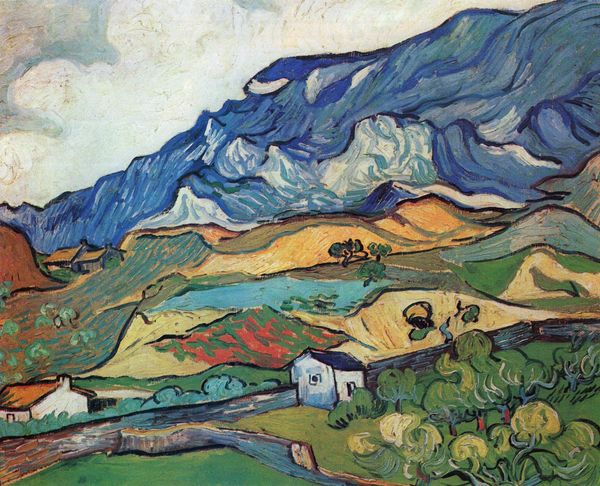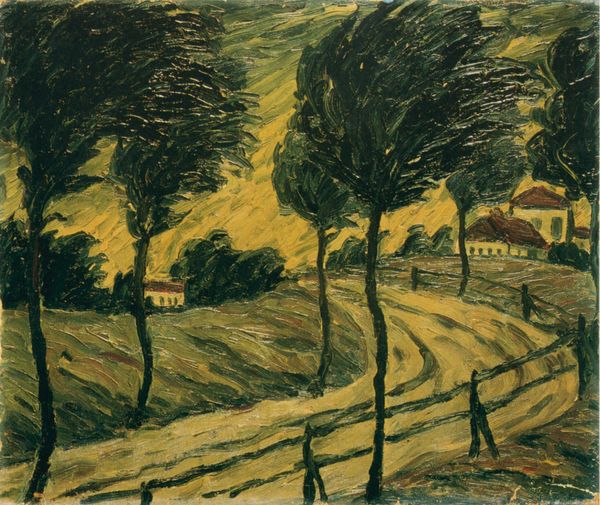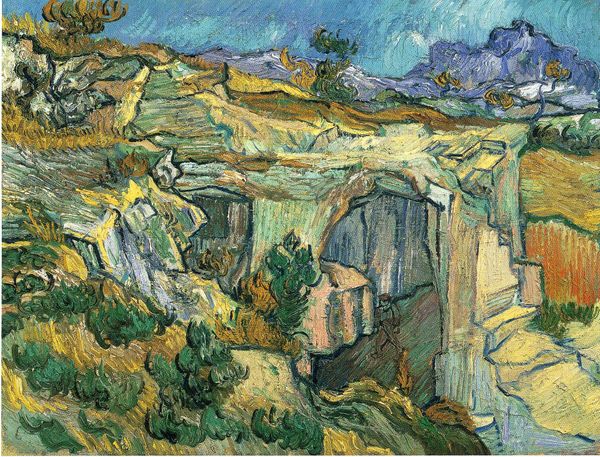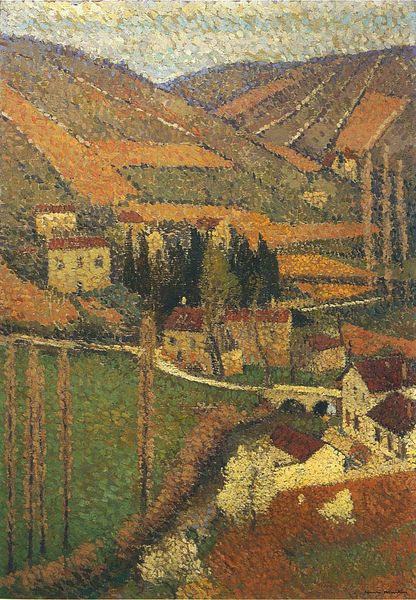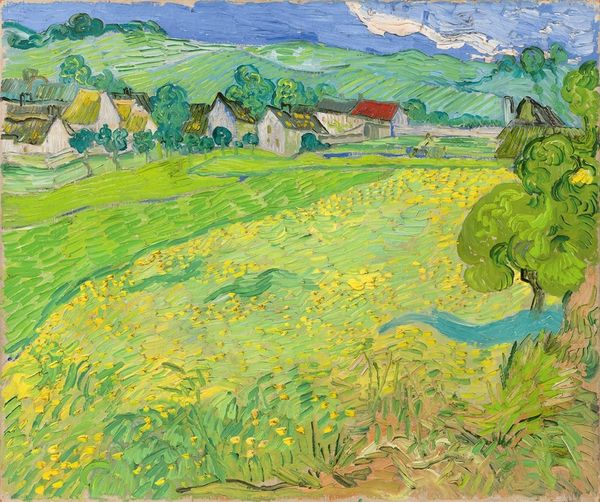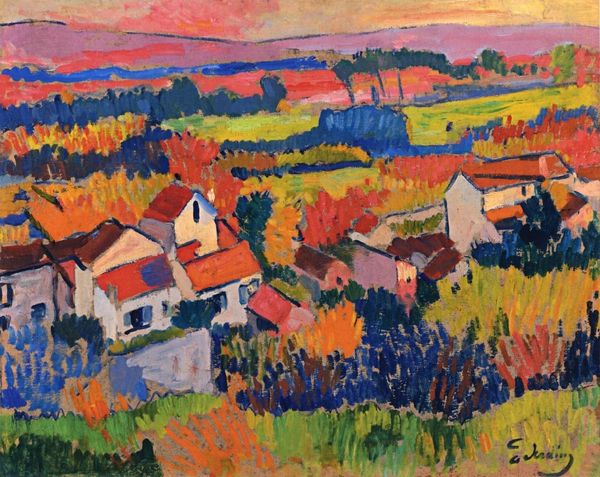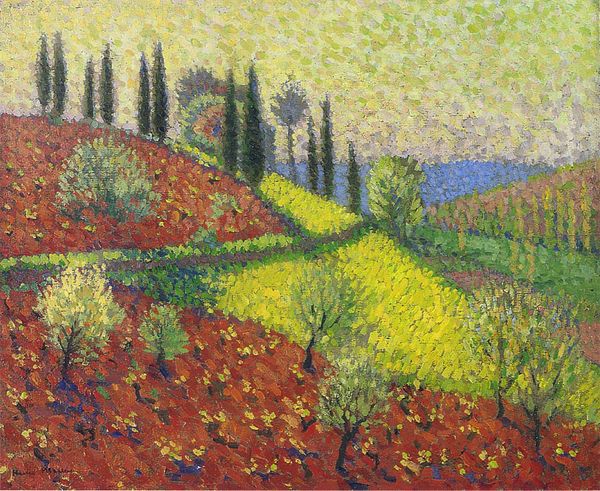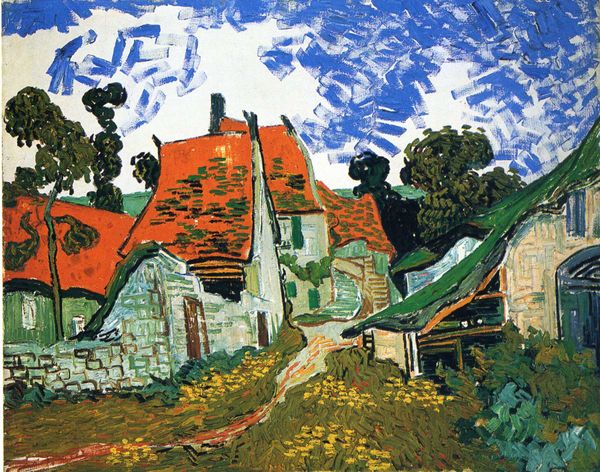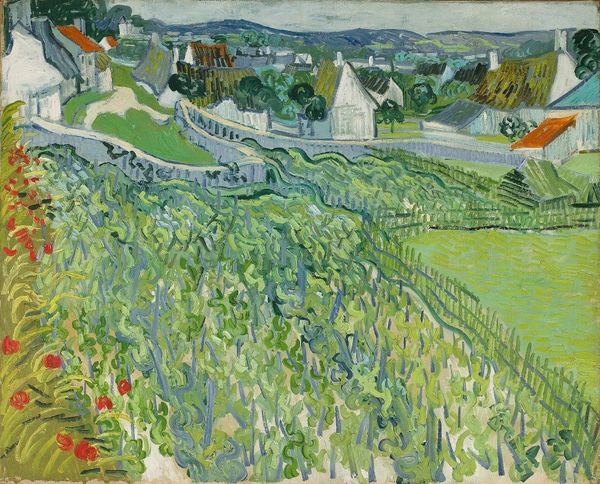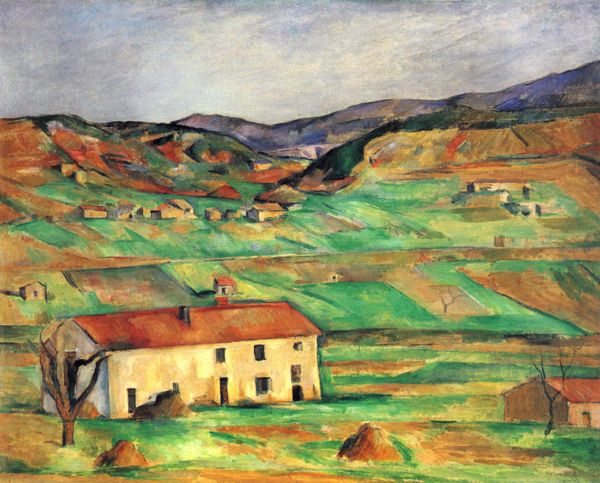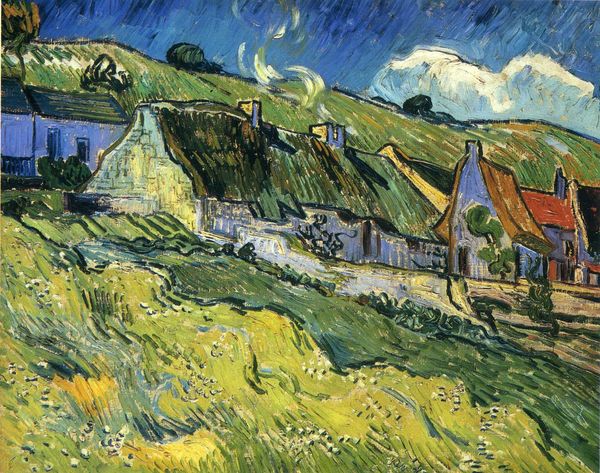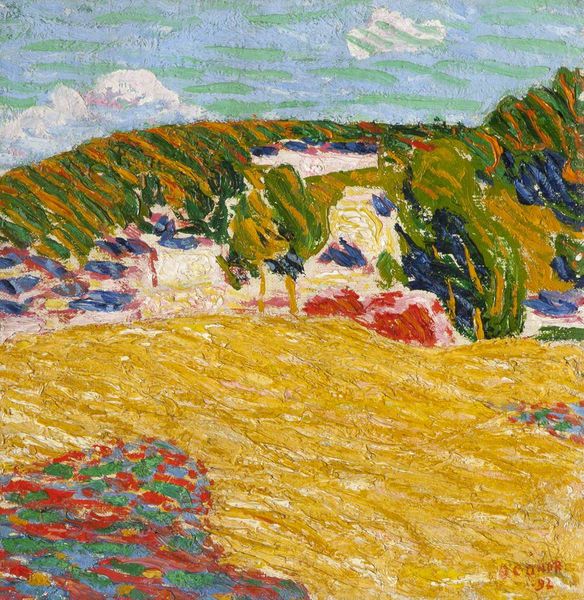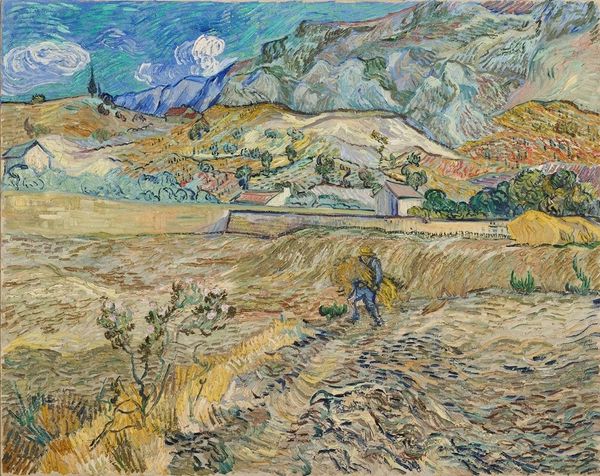
painting, oil-paint, impasto
#
painting
#
oil-paint
#
landscape
#
house
#
impressionist landscape
#
impasto
#
naive art
#
cityscape
#
painting art
#
genre-painting
#
post-impressionism
#
realism
Dimensions: 33 x 41.4 cm
Copyright: Public domain
Missing in action! Vincent van Gogh’s oil painting Landscape with House and Ploughman (1889) was considered lost for a significant part of its lifetime. It was unexpectedly exhibited in 1995, much to the shock and surprise of art historians. At the end of the Second World War, this painting was looted by the Soviet Union. The Red Army secretly seized over 2.5 million artworks from German museums and galleries in the chaos of wartime. Despite some of these works being returned in 1958, many remain in Russian collections. Landscape with House and Ploughman is now housed in Russia’s Hermitage Museum. Landscape with House and Ploughman is instantly recognisable as a Van Gogh painting. Its blocky brushstrokes infuse the work with character and energy, communicating the artist’s intense love for nature. The bold colour palette is dominated by oranges, yellows, and evergreen trees – suggestive of an autumnal afternoon. The perspective of this painting is peculiar. Van Gogh depicts the landscape from above, adopting a birds-eye-view over the rural scene. The composition consists of hilly fields, while a small building is nestled in the Cyprus trees. The vivid red roof is striking against the dark greens of the leaves. In the distance, a farmer stands with a horse. Van Gogh has captured a moment in the farmer’s everyday life, as he is caught in the process of ploughing the field. The interesting history of this painting, alongside its unusual aerial perspective, make it a fascinating work of art. Why do you think the Soviet Army chose to loot this specific painting? Was it a random act, or could the decision have been motivated by Van Gogh’s iconic status? 🖼️💭 Editor: Lucy Jude Grantham
Comments
No comments
Be the first to comment and join the conversation on the ultimate creative platform.
